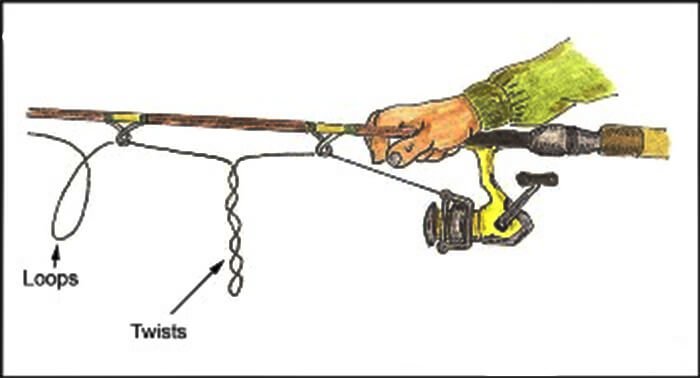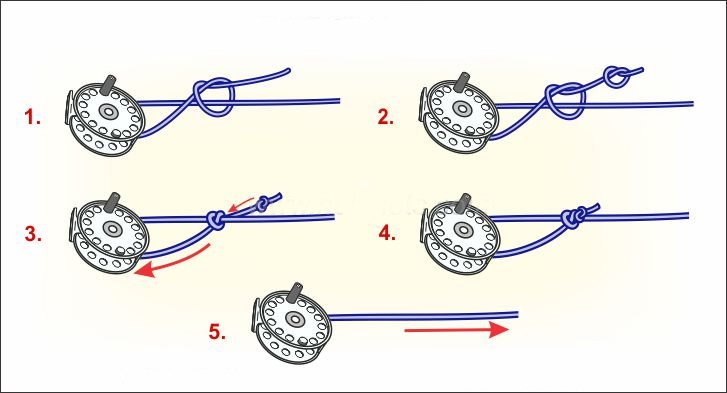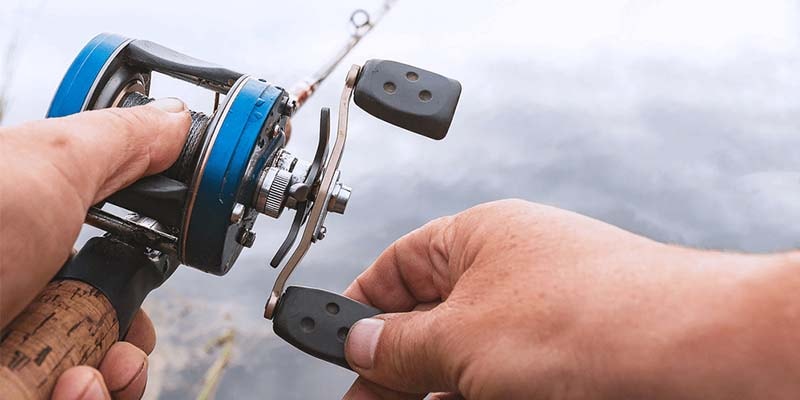To all the would-be pro bass fishermen out there who still don’t know how to spool a baitcaster, welcome to this article! As the title suggests, I’ll be giving some step-by-step instructions on how to spool the reel to ensure your bait gets where it needs to go… to the fish!
The article will cover how to tie the line around the spool and wind it onto the reel. I will also cover different knots as well as the recommendation for the best fishing line to use. But, before I get to any of that, there are some little notes that you might want to be aware of…
Things to be Aware of…
If you are like me and love doing things yourself, that’s awesome! But, personally, I hate jumping into an article that explains everything I need to do. But then, as I’m following the instructions, I discover some pretty important information about the process at the very end of it – after I’ve already messed up whatever I was making.
So, with that in mind, I’m reversing that trend and placing all the important information for spooling a baitcaster at the beginning of my article – so you know beforehand what to be on the lookout for. Now, to begin, any novice anglers out there who may or may not have spooled a baitcaster before, should be aware of the following:
Don’t Overfill the Spool!

I get it, you like to put on a little bit of extra so you feel like you are not wasting time always having to refill whatever it is you have… This is not one of those times. Adding more line to the reel that what it is meant to hold might feel like it will last longer, but you’ll realize quite the opposite once you get out on the water.
You’ll end up spending more time trying to cast without the line tangling than you are spending on what you came to do—fish. Overfilling the reel almost always guarantees a bird’s nest, which is essentially a giant entanglement of fishing line that usually has to be cut off. So, take a bit of advice before you start: be sure to finish spooling the reel about an eighth (1/8) of an inch away from the top of the spool. Now on to the next bit…
Line Twist

Take your time with spooling! If a line gets twisted it’ll cause some serious frustration later down the road and you’ll likely have to do the whole process all over again (which isn’t fun). Now normally, when you get a pre-rolled baitcasting reel, the line on the reel came off the bulk spool perfectly—which means you can jump right into action.
When you spool a baitcaster at home though, you likely don’t have all the fancy machinery they use in the shop to get the job done as quickly and efficiently as possible. At home, you’ll probably have to take the line off the spool in circular loops. This means that you’re more prone to twisting lines and producing later entanglements.
You can avoid this issue by having a pencil and a buddy handy. Place the pencil through the holes in the middle of the bulk spool and have your buddy hold the pencil and bulk spool with both hands. That way, the line comes off in pretty much the same way you’re reeling it in! Nevertheless, take your time with the spooling and try to make sure that no lines get twisted in the works!
And remember to keep the line from the bulk spool being fed from the top of the spool (not underneath)! This will help to ensure you aren’t making any noticeable mistakes. If you’re on your own though, there is a neat trick you can do with an old can and that handy pencil you brought from the office.
In Short…
Basically, all you do is drill two holes into the /side of the can, then put the spool inside, feed the line through the outside of the hole in the can, and that’s that! You got yourself a device that allows the spool to spin the line freely while you’re reeling into the caster! These tips will get you pretty far without troubles, but there is one last thing you ought to be wary of though—and that is line tension.
Line Tension
Professional reels don’t have this problem but, doing it yourself is something you have to get right, and to take into consideration certain measures to ensure something is performing as a brake. If you plan on doing what most fishermen want to do, and catch big fish, then it’s imperative to make certain there is a tight drag on the line—so that the whole thing doesn’t get snatched away by the hog (or at the very least cause an entangled jumble)!
You can prevent this by applying tension while you’re reeling in the line from the bulk spool. Place a few books on top of the line to create some drag and the drag will make sure that the reel is loaded snug. Now that we’ve got some of the basic “bewares” covered, let’s move on to the real deal.
Also Read: Best Baitcasting Reels Under 100 – Top Selections That Suits You
How to Spool Line on a Baitcaster

First and foremost, while you spool a baitcaster, you want to feed the line through each line guide along the rod. Then, you want to feed it through the line guide of the actual reel. Once you’ve done so, tie a small overhand knot on the tag end of the line and cinch it up. Then tie the double overhand (go over once, then one over again). And then tighten it down to the spool of the rod.
Once tightened, pull on the main line so it pulls the tag into the double overhand knot. From here, you can simply cut the tag end off, level the spool of the caster with the bulk spool you will be reeling from and start spooling the caster. Keeping the 1/8th rule in mind, fully reel the spool. Also, ensure there is still sufficient line to feed through the rod guides.
Once everything is secure, feel free to tie on a lure, cast, and wait for the bite. Another thing to remember is that although this knot should suffice for most of your fishing needs, if you happen to be going for bigger game, then perhaps a more formal knot is advisable. But it all depends on what you’re going for.
You might also consider re-spooling a baitcasting reel as well—it comes in handy in a number of ways. Here I’m speaking from experience, as I learned this trick from my pops. For one, the line doesn’t tend to kink whenever you cast. Second, the line won’t get UV damage or create line memory on the caster or fishing rod.
An Advantage
If you’re in a hurry to get the job done, then perhaps a Baitcaster Reel is something for you. It’s slightly different from your average caster. Because it comes with an electric motor and a special spindle that mounts a spool by wounding the fishing line. In other words: a huge time saver. From here, it mostly becomes a question of preferences.
Think You Need Mono Backing to Spool a Baitcaster?
To be clear, mono-backing is not always needed, especially if you are spooling with anything other than braid. Using a braided line, however, can be useful for a variety of reasons. If you are considering using this, then monofilament is a necessity. It’s necessary because it holds the reel easier even when the line is totally run out. Even then it’ll still have the drag system.
Braided lines, especially when attached to aluminum spools, can often slip, causing a poor drag system when the line is towards the end of the spool (what’s that you said about wanting the line to last longer?). To do all of this properly, you’ll need to attach the mono to the braided line using a double uni knot. You do this by taking the tag end of the backing and making a loop with a braid.
Pinch it and make five loops around the braid and backing. Once you have the five wraps, cinch it tightly (not too tight, but just enough to where it fits snug). Now, do the same on the other side where you will be wrapping your backing around your braid. Repeat the same process.
Also Read: Baitcaster VS Spinning Reel – Learn More About It
Conclusions
Professionally spooled reels are almost always a preference for most anglers. However, learning how to spool a baitcaster (and doing it properly) can be very useful. Especially, it is true for any novice looking to take his game to the next level. At the very least, it helps in being a bit more independent when it comes to fishing! It doesn’t take much to learn, and when you got it you got it. Once you do, you’ll be looking forward to every time out on the boat ready to catch that next hog… Fish On!


Solid tips for spooling! I end up with a few twists sometimes probably because I’m just not getting the line feed off the spool right. Spinning reels are notorious for twisting if you don’t get things on properly.